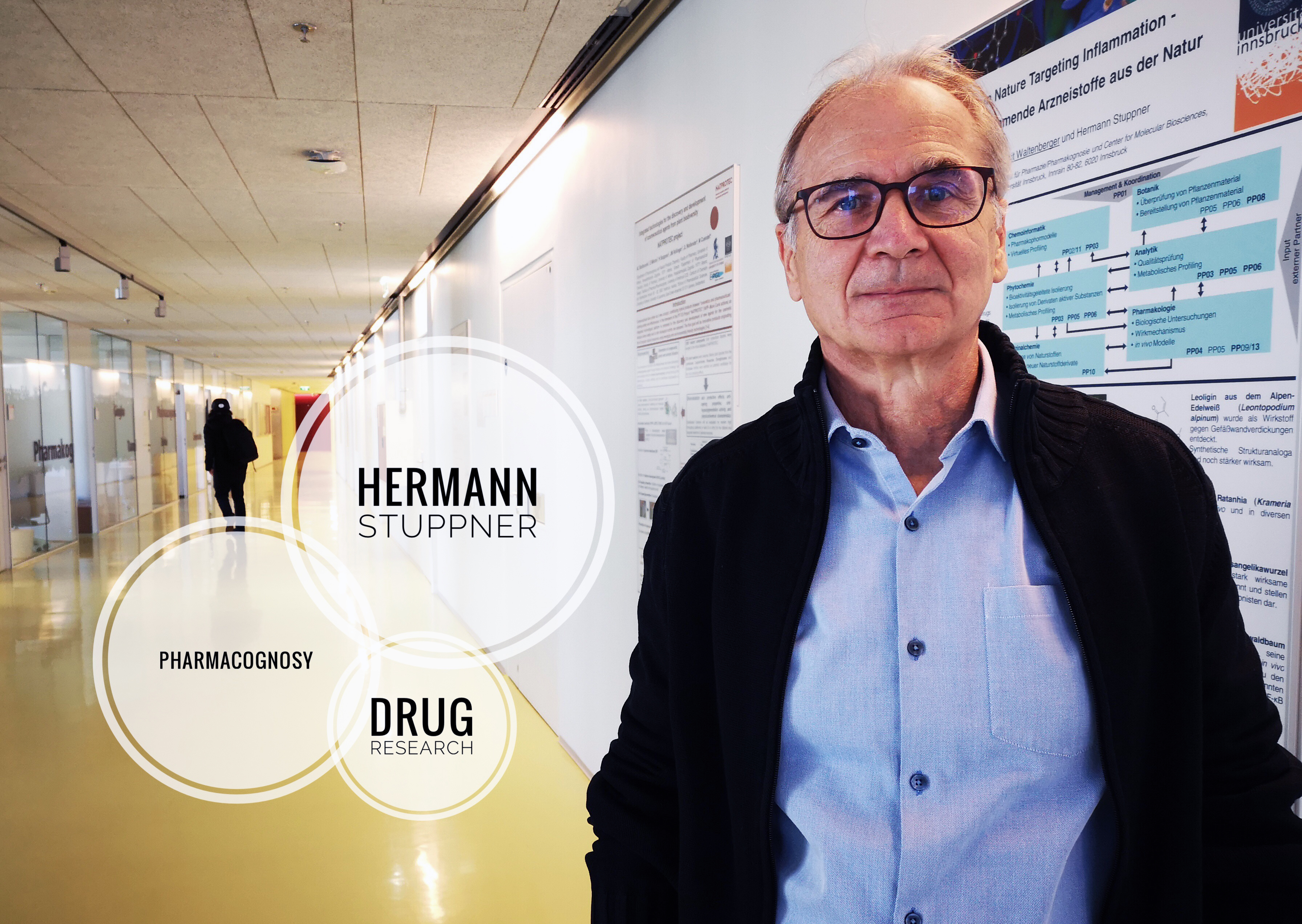Our supervisors

Scientific background »
Short description of thesis topic »
The Jansen-Dürr lab investigates the role of mitochondria in cellular senescence and ageing. Besides the role of mitochondrial quality control in ageing of the human skin and other tissues, our work focuses on the in vivo function of FAHD1, a newly identified human mitochondrial enzyme with oxaloacetate decarboxylase activitiy. To address these research questions, we use multiple -omics technologies, molecular genetics, as well as state-of-the-art imaging technologies in cell culture models, reconstructed human skin and FAHD1 loss-of-function animal models.

Scientific background »
Short description of thesis topic »
The Edenhofer lab analyses the core transcriptional network regulating pluripotency and neural stemness including Oct-4, Nanog, Sox2, Brn-2 and Myc. The group developed a strategy to directly convert human skin-derived fibroblasts to induced neural stem cells (iNSCs). iNSCs are being validated for disease modeling and cell therapy approaches focusing at myelin deficiency, Multiple Sclerosis, and neurodevelopmental disorders (NDD). We apply human (neural) stem cell culture, targeted neural differentiation in 2D, derivation of complex 3D neural tissue organoids, histology, immunohistochemistry, confocal microscopy; moreover, we use genome-wide omics approaches to understand organ function at a global level. Our findings will help to develop reliable models of CNS function and dysfunction and provide a novel cellular basis for autologous cell replacement therapy.

The Hobmayer lab studies adult stem cells and their action in regeneration and ageing phenomena in the simple multicellular animal Hydra. Hydra represents a classic model system showing unparalleled capacity for regeneration, dynamic adult stem cell lineages, and an extensive life span. We analyze the roles of Wnt signaling pathways and oncogenic Myc transcription factors, two core regulators in adult stem cell decision making. By using state-of-the-art light and electron microscopic approaches in combination with methods of genetic interference, we try to understand our research topics at cellular and molecular levels.

Scientific background »
Short description of thesis topic »
The Kranner lab investigates responses of plants to stress on the biochemical, physiological and molecular level. Using an updated version of the stress model by János Selye, one of the most widely accepted biomedical stress models, the group is working on deciphering the various phases of stress, from "alarm" and "resistance" – corresponding to "eustress" and conferring tolerance – to "exhaustion". The latter is equivalent to distress, leading to deterioration, ageing and ultimately, death. Seeds are particularly useful models to study stress, as they can be aged artificially and their viability assessed through gemination tests. Studying the mechanisms of plant and seed viability has also important socio-economical aspects: all food is directly or indirectly derived from plants, and seeds are the most important basis of human and animal nutrition.

Klaus Liedl and his research group focus on the development and application of computational methods to rationalize and predict chemical and biochemical phenomena at a molecular level. This comprises scientific areas such as molecular dynamics simulations, quantum mechanical calculations and chemo- and bioinformatics. The group both develops molecular force fields and data analysis methods and applies existing methods to explain experimental results and to guide future experiments.


The Meyer lab investigates pancreatic fate determination during development and organ-regeneration. Main focus of our work is on the formation and function of insulin secreting beta-cells and on genetic conditions of diabetes. In our research we use genetic and high-resolution live imaging approaches in zebrafish and human cell culture models to dissect the associated molecular mechanism and cellular processes. The goal of our studies is to gain understanding of pancreatic differentiation and maturation processes at single-cell level.

The Rothbächer lab studies cell fate switching in vivo, utilizing the great cellular and genomic simplicity of developing tunicates, the closest sister group to vertebrates. While the activation of Wnt and FGF signaling is of central importance in the pluripotency context, we recently discovered intruiging novel repressive functions of their nuclear effectors influencing target gene expression and cell fate choice. In parallel to describing the underlying mechanisms in further detail they already open great possibilities for testing the conservation, also in human stemness and the potential for drug mediated control. We use methods of electroporation mediated gain- and loss-of function to monitor transcriptional activity in vivo combined to high-end genomics, imaging and ex-vivo proteomics.

Univ.-Prof. Mag. Dr. Hermann STUPPNER
The Department of Pharmacognosy has its competence in natural products research, including the isolation and structural elucidation of novel compounds, their analysis in biological matrices and commercial products by state-of-the-art techniques, as well as activity evaluations in-vitro and in-silico. For the discovery of new (bioactive) natural products different strategies are followed e.g. the investigation of new or poorly studied biological sources, or screening of extracts (mostly with ethno-pharmacological background) followed by dereplication and bioactivity-guided isolation.

Research area(s): voltage-gated calcium channels, channelopathies, neuropsychatric diseases, membrane excitability, calcium channel blockers, dihydropyridines

The Lab for Metabolic Signaling studies the control of metabolic homeostasis by kinase networks centred on the mammalian/mechanistic target of rapamycin (mTOR). Located at the insitute of biochemistry (faculty of chemistry and pharmacy), we adopt biochemistry, cell biology, proteomics, metabolomics and systems modelling approaches. Our institute hosts own mass spectrometry and microscopy units, enabling high resolution proteomics, metabolomics, and imaging.

Cellular Aging, Obesity / Caloric Restriction
Scientific background »
Short description of thesis topic »
The Zwerschke lab works on adipose tissue biology with main emphasis on molecular mechanisms underlying proliferation, differentiation and aging of adipose stem/progenitor cells (ASCs). In addition, the group studies the impact of obesity and weight-loss interventions (such as caloric restriction) on ASCs and analyses the effects of weight-loss mimetics on ASCs and adipocytes. To address our research questions, we use genomics, transcriptomics and proteomics technologies, modern techniques of molecular and cell biology including CRISPR-mediated genome editing, flow cytometry and up-to-date imaging technologies. We work with primary human cells ex vivo and in cell culture and use genetic animal models.
Funding
This project has received funding from the European Union’s Horizon 2020 research and innovation programme under the Marie Skłodowska-Curie grant agreement No 847681.
